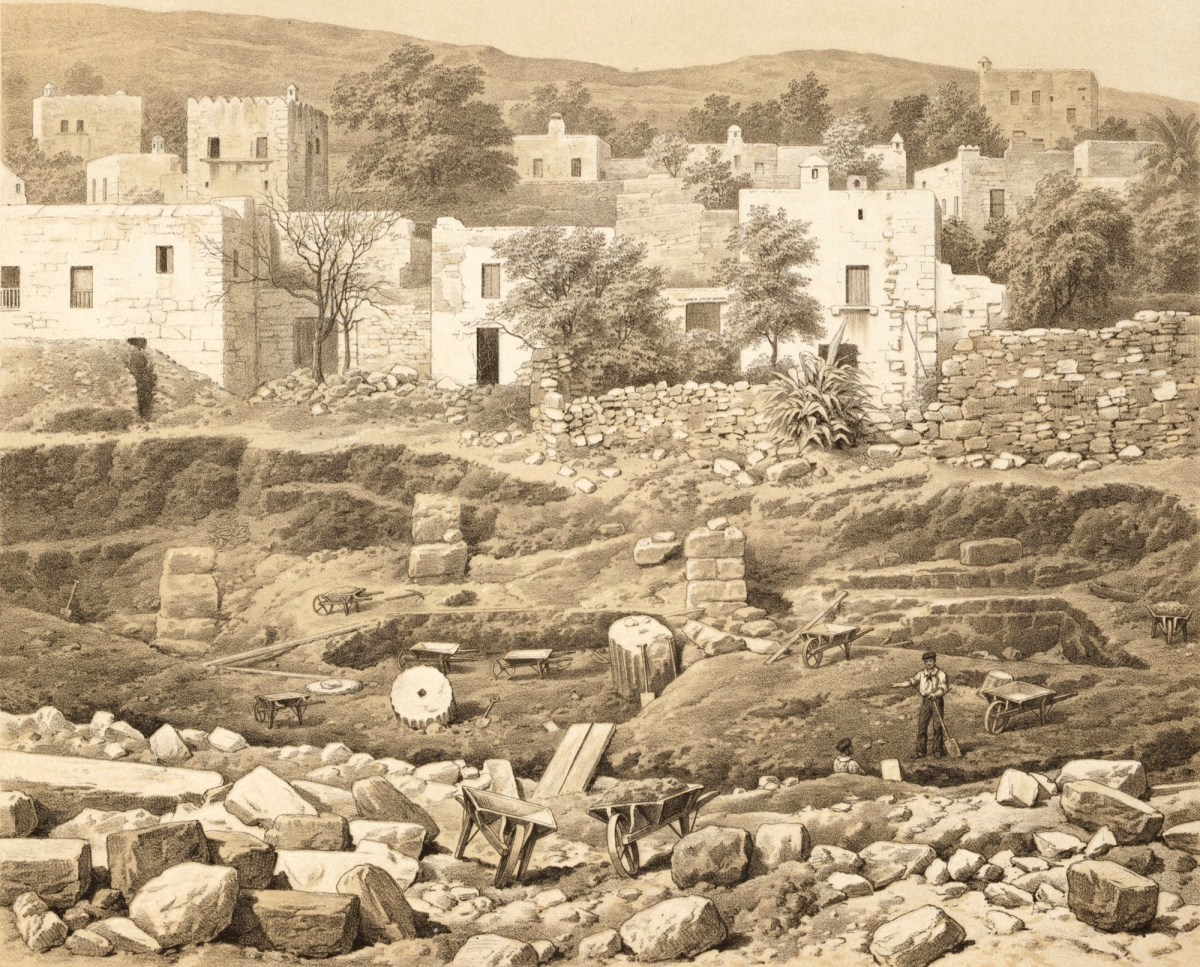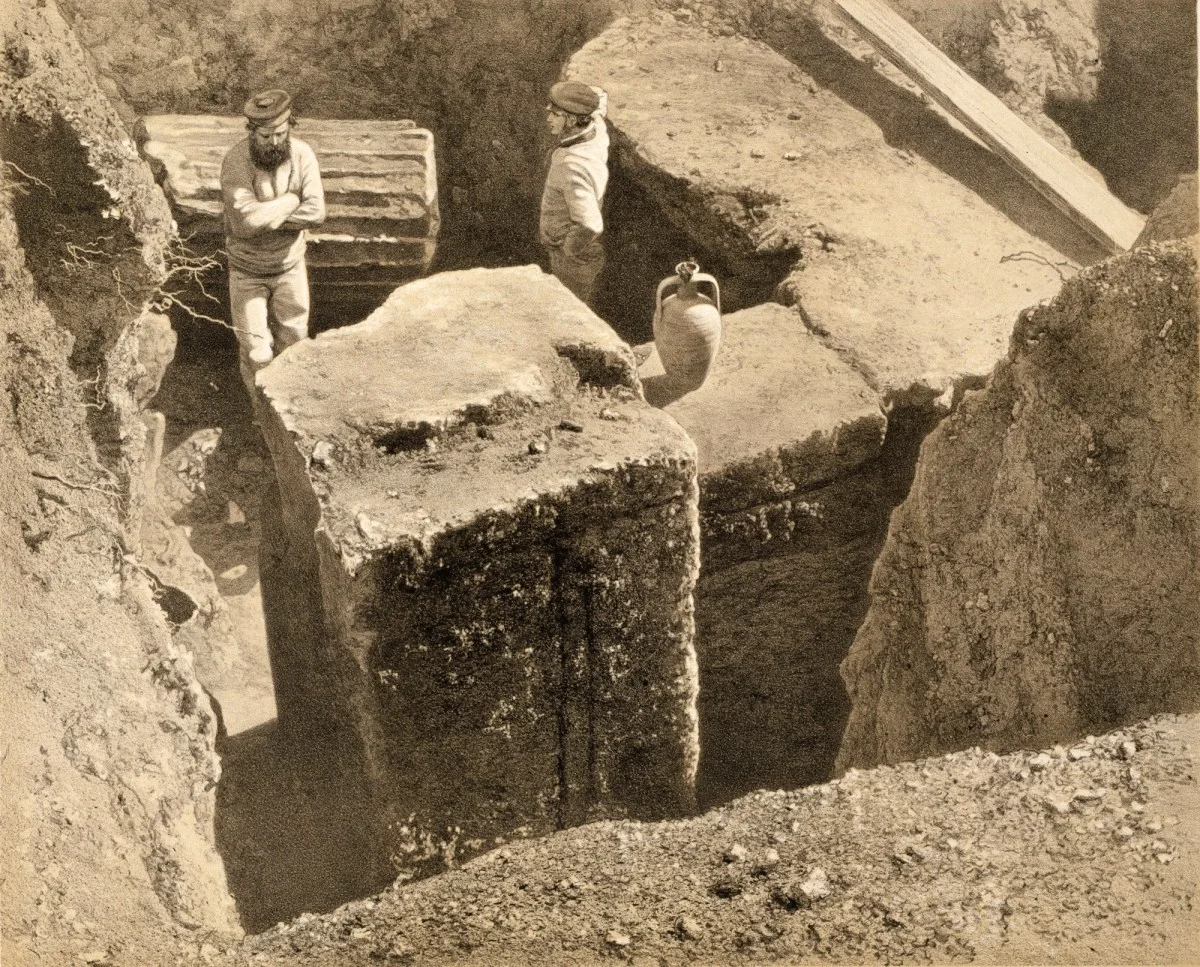The Mausoleum at Halicarnassus: A Glimpse into One of the 7 Wonders
Since I learned to read, I’ve been captivated by Greek mythology and history. The two are so intertwined that it’s often hard to distinguish fact from fiction. One of the most fascinating aspects of this mythological world is how it all unfolded in such a relatively small area—modern Greece and parts of Albania, Turkey, Bulgaria, and North Macedonia. Imagine living in ancient Greece, where you could visit the very places from these stories: the rock where Prometheus was chained, Hephaestus’ workshop, Mount Olympus, and even the Seven Wonders of the Ancient World. These are all real places.
The Mausoleum at Halicarnassus was my first encounter with a World Wonder—well, at least outside the virtual worlds of Assassin’s Creed Origins (the Pyramids and Lighthouse) and Odyssey (the Statue of Zeus).
My visit happened almost by accident. We were attending a wedding (see previous posts) and ended up in Bodrum, Turkey. I was thrilled to discover that this modern paradise of luxury yachts and five-star hotels was once ancient Halicarnassus, home to one of the Seven Wonders of the Ancient World.
Almost nothing remains at the site where the great Mausoleum of Halicarnassus once stood, one of the Seven Wonders of the Ancient World.
The city of Bodrum is now a popular beach destination, and if I hadn’t researched the area beforehand, I’d have had no idea it was once home to the Mausoleum of Halicarnassus. None of my friends at the hotel were aware of its historical significance, and there were no signs or markers to indicate that we were standing so close to the site of one of the most magnificent structures of the ancient world.
Hoards of tourists enjoy the sun in the crystal blue waters of the Mediterranean.
Fortunately, modern map apps on our phones came to the rescue.
The only clue we were nearing the Mausoleum was a modest sign tucked away in a small alley—not exactly what you'd expect for one of the Seven Wonders of the Ancient World.
After a few minutes of walking through the winding streets of this quaint coastal city, we arrived at the site of the great Mausoleum. Or rather, what’s left of it—a walled field scattered with stones and a small museum. Not much remains. Actually, nothing stands. But I was there. Standing in the very place I’d read about countless times, the site of one of the Seven Wonders of the Ancient World.
For some, this might feel a bit underwhelming—a pile of rubble, far from the grandeur of the Hagia Sophia or the ornate cathedrals of Europe. But the significance of this place lies not in what you see, but in what was once here. It’s about standing on the very ground where history was made, where legends were born.
The great Mausoleum, once an awe-inspiring structure towering 40 meters high and spanning 125 meters in width, is now reduced to little more than a pile of rocks.
A replica in the museum offers a glimpse into how the Mausoleum looked before it was destroyed by earthquakes in 1404. The magnificent structure featured 36 towering columns, adorned with larger-than-life statues of lions, and topped with a grand chariot pulled by four horses, said to carry the images of Maussollus and his wife.
The Rise and Fall of the Mausoleum at Halicarnassus
The Mausoleum at Halicarnassus, built in 353 BCE, wasn’t originally called a mausoleum—because the term didn’t exist yet. This structure is the very definition of what a mausoleum is. But why, you may ask?
This monumental tomb was constructed for King Maussollus by his sister-wife. Yes, you read that right—he married his sister. It was a different time, with different customs.
For over 1,500 years, the Mausoleum towered over the city, offering a breathtaking sight to sailors arriving from the sea. But between the 12th and 15th centuries, a series of devastating earthquakes reduced this grand Wonder of the Ancient World to ruins, leaving behind only fragments of its former glory.
They’ve added roofs to cover some of the stones—probably to prevent visitors from completely dehydrating under the relentless sun while exploring the site.
Fragments of the 36 columns still remain, but beyond that, nothing else survives—not even the base of the once-magnificent structure.
I don’t know Greek—ancient or modern—but it seems to me that 'τοποελ' is inscribed on this stone. As far as I can tell, it doesn’t mean anything. If you happen to know Greek, I’d love to hear your thoughts. It’s possible this is just a partial inscription or a fragment of a longer word.
In the museum, they display some of the few surviving engravings that remain in Turkey.
But what happened to all the rubble and statues? For such a massive structure, surely there should be more than just a few scattered fragments of columns, right?
By 1404, only the base of the Mausoleum remained standing. Then came the Knights of St. John of Rhodes, who ‘moved’ to Bodrum—by which I mean they invaded—and needed a place to settle. To build the Castle of Saint Peter, they turned to the most convenient source of materials: the stones from the ruins of the Mausoleum and its base.
The castle still stands today, a striking reminder of how history often repurposes itself
The Castle of Saint Peter, famously built using stones from the Mausoleum, still stands as a testament to history’s reuse of greatness. Unfortunately, when I visited, it was undergoing renovations—as evidenced by the cranes towering over it.
Three cheap fiberglass replicas of statues recovered from the Mausoleum are displayed in the entrance of the Castle of Saint Peter.
What about the statues?
By the 19th century, the exact location of the Mausoleum had been lost to time. That changed when British Museum archaeologist Charles Thomas Newton was sent to Bodrum to search for the ruins. Using historical accounts as his guide, he pinpointed a likely site, excavated the area, and uncovered the Mausoleum’s walls along with fragments of the statue that once crowned the entire structure. These discoveries were promptly shipped to the British Museum, where they remain on display to this day.
Adding to the historical record, artist Thomas Picken created detailed lithographs in 1862, capturing the excavations and providing a visual account of Newton’s groundbreaking work.
The British Museum features an entire section dedicated to Ancient Greece, with a significant portion of the artifacts originating from Halicarnassus, including remarkable pieces from the Mausoleum.
One of the four horses that once crowned the Mausoleum is preserved in the British Museum, along with the majestic lions that once adorned its grand entrance.
Here are the statues believed to depict Artemisia and Maussollos, which once stood at the very top of the Mausoleum, inside a chariot pulled by four horses. While the plaques at the British Museum note that there is no definitive evidence confirming their identities, it is highly likely these statues represent the legendary figures.
The statue of King Maussollus himself stands tall and imposing. The statues are quite large, likely designed to be visible from great distances, adding to the grandeur of the Mausoleum.
The sides of the Mausoleum were adorned with intricate depictions of the Amazonomachy, the legendary battles between the Greeks and the Amazons.
The engravings showcase various dramatic battle scenes from the myth. In one of the slabs—though not this one—Hercules is depicted seizing Queen Hippolyta by her hair. Unfortunately, I missed seeing that particular piece during my visit.
If you're visiting the British Museum to explore artifacts from Halicarnassus, make sure to check out the basement! Many fascinating pieces are tucked away there, waiting to be discovered.
Charles Thomas Newton brought back numerous intricate details from the Mausoleum’s site to England, offering a glimpse into the craftsmanship of the ancient structure.
Among his most remarkable discoveries were these stunning mosaics, which now adorn the walls of one of the stairways in the British Museum—a testament to the artistic grandeur of Halicarnassus.
If you're not careful, you might miss these two lions flanking a grand staircase in the British Museum.
Once guardians of the Mausoleum’s main entrance, these majestic lions now stand on either side of the staircase.
Most people walk right past the lions, and honestly, I don’t blame them—there’s so much incredible history to take in at the British Museum.
Visiting the ruins of the Mausoleum of Halicarnassus and seeing its artifacts at the British Museum was a humbling journey through history. While the grand structure itself no longer stands, the fragments that remain—both in Turkey and abroad—offer a glimpse into the ingenuity and artistry of the ancient world. It’s a reminder of how civilizations rise, fall, and leave behind traces of their greatness, inspiring awe centuries later. Whether standing in Bodrum or walking through the halls of the museum, the Mausoleum’s legacy continues to captivate those who seek it out.























